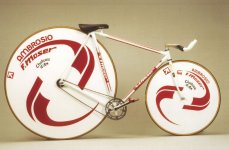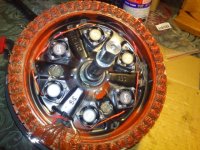Thanks for that John that's what I thought. I am glad you chimed in as I was going to initially pm you my question as I know you know your stuff..
I ran the 22s today did around 30 mile and it was nice to have the extra capacity had fun with burst of 4.5kw. (my cycle analyst limits to 4.5kw)
Had no issues at all temps at the top of the longest climb home about 1 mile long motor was only 29c
Enjoying this leafmotor so far
I ran the 22s today did around 30 mile and it was nice to have the extra capacity had fun with burst of 4.5kw. (my cycle analyst limits to 4.5kw)
Had no issues at all temps at the top of the longest climb home about 1 mile long motor was only 29c
Enjoying this leafmotor so far




